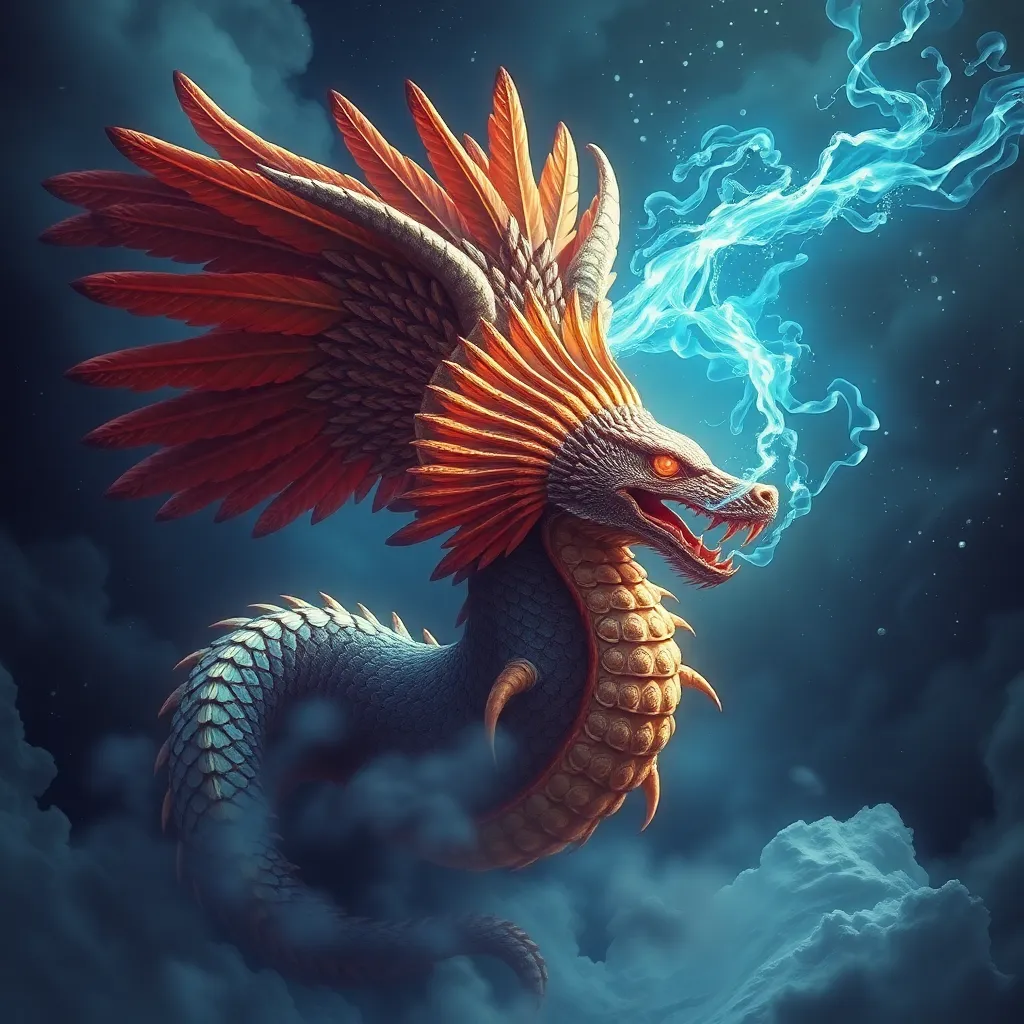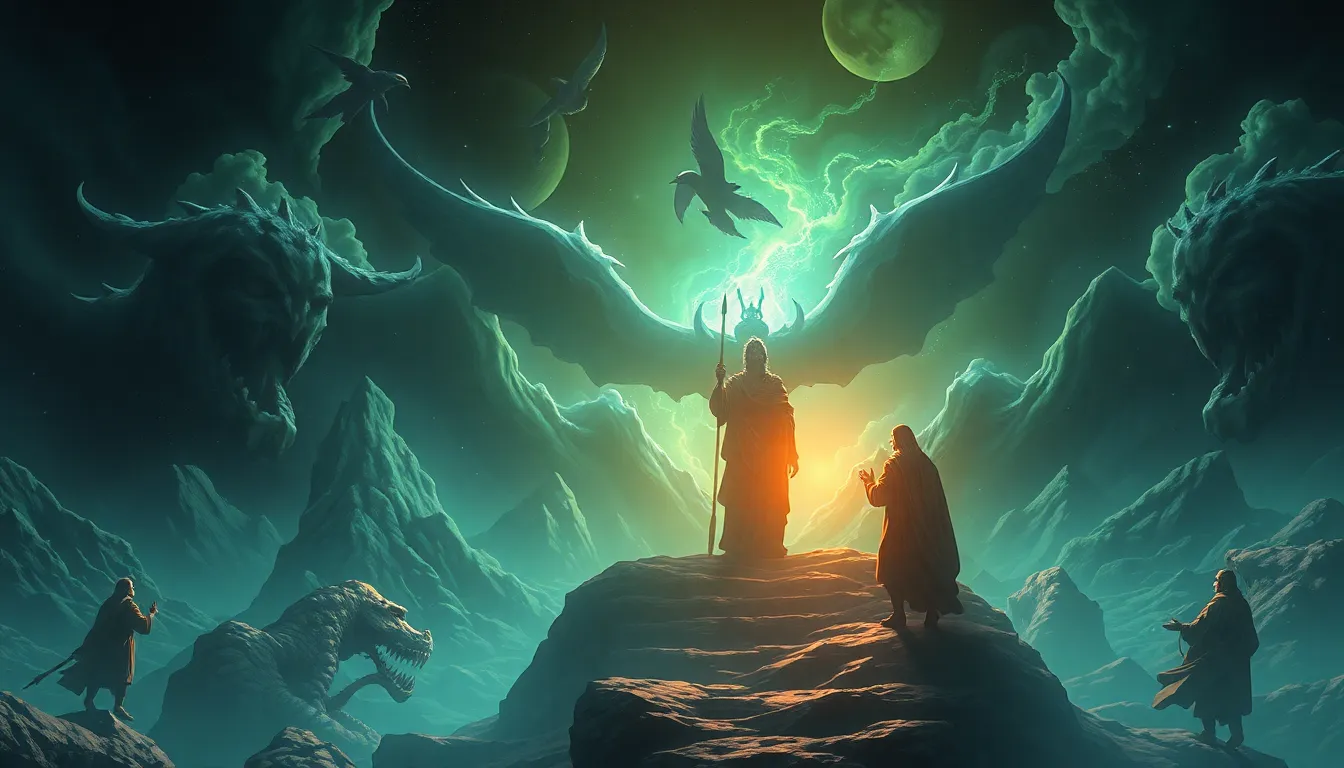The Tengu’s Transformation: From Demonic Figures to Protective Spirits
I. Introduction
The Tengu, a fascinating figure in Japanese folklore, has captivated the imagination of people for centuries. These mythical creatures, often depicted with human and avian features, have undergone a significant transformation in their representation and symbolism over time. Understanding the evolution of Tengu from demonic figures to protective spirits is essential in grasping their place in Japanese culture and spirituality.
This article aims to explore the historical origins, characteristics, and cultural significance of Tengu, highlighting their transformation and ongoing relevance in modern Japan.
II. Historical Origins of Tengu
The origins of Tengu can be traced back to early references in Japanese mythology, where they were depicted as supernatural beings with the ability to fly and wield magical powers. Their representations have evolved, influenced by various cultural and religious traditions.
A. Early references in Japanese mythology
The earliest mentions of Tengu can be found in texts such as the “Nihon Shoki” (Chronicles of Japan), which dates back to the 8th century. In these early accounts, Tengu were often associated with mountains and forests, embodying the wild and untamed aspects of nature.
B. Influences from Chinese and Buddhist traditions
The concept of Tengu was significantly shaped by Chinese mythology and the introduction of Buddhism to Japan. In Chinese folklore, there are similar beings known as “tiāngǔ,” which also exhibit bird-like characteristics. As Buddhism spread, Tengu began to be associated with mischievous behavior and chaos, reflecting the tensions between spiritual and earthly realms.
C. The depiction of Tengu in ancient texts
Ancient texts often depicted Tengu as formidable adversaries of Buddhist monks and practitioners. They were seen as protectors of the mountains, but also as tricksters who could lead travelers astray. This duality established the foundation for the complex nature of Tengu in folklore.
III. Tengu as Demonic Figures
In early folklore, Tengu were predominantly viewed as demonic figures, embodying chaos and mischief.
A. Characteristics of Tengu in early folklore
- Often depicted with red faces, long noses, and a combination of human and bird features.
- Possessed supernatural powers, including flight and shape-shifting.
- Associated with wild animals and the untamed aspects of nature.
B. The role of Tengu in Japanese legends and tales
Tengu played significant roles in various legends, often as antagonists who challenged heroes or monks. They were known to abduct individuals, leading them into the mountains, where travelers would encounter trials and tribulations.
C. Symbolism of chaos and mischief associated with Tengu
The symbolism of Tengu as harbingers of chaos and mischief reflected the fear of the unknown and the untamed forces of nature. Their antics served as cautionary tales, warning against hubris and the dangers of straying too far from the path of righteousness.
IV. The Shift in Perception
As Japan underwent cultural and societal changes, the perception of Tengu began to shift dramatically.
A. Cultural and societal changes in Japan
The transition from a feudal society to a more urbanized and modern Japan allowed for new interpretations of Tengu. As literacy increased, so did the availability of stories that portrayed Tengu in a more nuanced light.
B. The influence of Buddhism and Shintoism on Tengu imagery
Buddhism’s teachings about compassion and protection began to influence the representation of Tengu. Concurrently, Shintoism, with its reverence for nature and kami (spiritual beings), contributed to the view of Tengu as guardians rather than malevolent spirits.
C. Key historical events leading to reevaluation
Historical events, such as the Meiji Restoration and the modernization of Japan, encouraged a reevaluation of traditional beliefs. The emphasis on nationalism and the appreciation of folklore led to a resurgence in the positive portrayal of Tengu as protectors of the land.
V. Tengu as Protective Spirits
The transformation of Tengu into protective spirits marked a significant shift in their role within communities.
A. Transformation of Tengu into guardians
With the changing societal landscape, Tengu began to be viewed as guardians of mountains and forests, protecting both the land and its people from malevolent forces.
B. Roles of Tengu in local communities and shrines
- Tengu are often enshrined in local shrines, where they are worshiped as protectors.
- Communities hold festivals celebrating Tengu, reinforcing their role as benevolent spirits.
C. Stories and legends highlighting their protective nature
Numerous stories emerged depicting Tengu as saviors who aided lost travelers or defended villages from harm. These narratives reinforced the idea of Tengu as helpful, rather than harmful, beings.
VI. Symbolism of Tengu in Modern Culture
Today, Tengu continue to hold a significant place in Japanese culture, appearing in various forms of art and media.
A. Tengu in contemporary literature and media
Modern literature often portrays Tengu as complex characters, embodying both their mischievous past and protective present. They often appear in manga, anime, and novels, appealing to a broad audience.
B. The portrayal of Tengu in art and popular culture
- Traditional woodblock prints often depict Tengu in dynamic poses, showcasing their flight and agility.
- In contemporary art, Tengu are reimagined in various styles, from modern illustrations to street art.
C. The ongoing relevance of Tengu in Japanese identity
Tengu serve as a reminder of Japan’s rich folklore and cultural heritage. They embody the complexities of nature and the human experience, making them enduring symbols within Japanese identity.
VII. Tengu in Modern Spiritual Practices
The worship of Tengu persists in various forms in contemporary Japan.
A. How Tengu are worshipped today
Many people visit Tengu shrines to offer prayers and seek guidance, reflecting their ongoing role in spiritual practices.
B. Rituals and festivals associated with Tengu
- Festivals celebrating Tengu often include parades, traditional dances, and rituals to honor these spirits.
- Local communities may hold events that showcase Tengu-themed performances, reinforcing cultural connections.
C. The balance between tradition and modern beliefs
While modern beliefs and practices evolve, the reverence for Tengu remains strong, illustrating a balance between tradition and contemporary spirituality.
VIII. Conclusion
The transformation of Tengu from demonic figures to protective spirits illustrates the dynamic nature of folklore and cultural identity in Japan. Over time, Tengu have evolved to embody both the chaos of nature and the guardianship of the land.
This evolution is a testament to the resilience and adaptability of cultural narratives within Japanese society. As Tengu continue to inspire art, literature, and spiritual practices, their legacy endures, reminding us of the profound connections between humanity, nature, and the supernatural.



